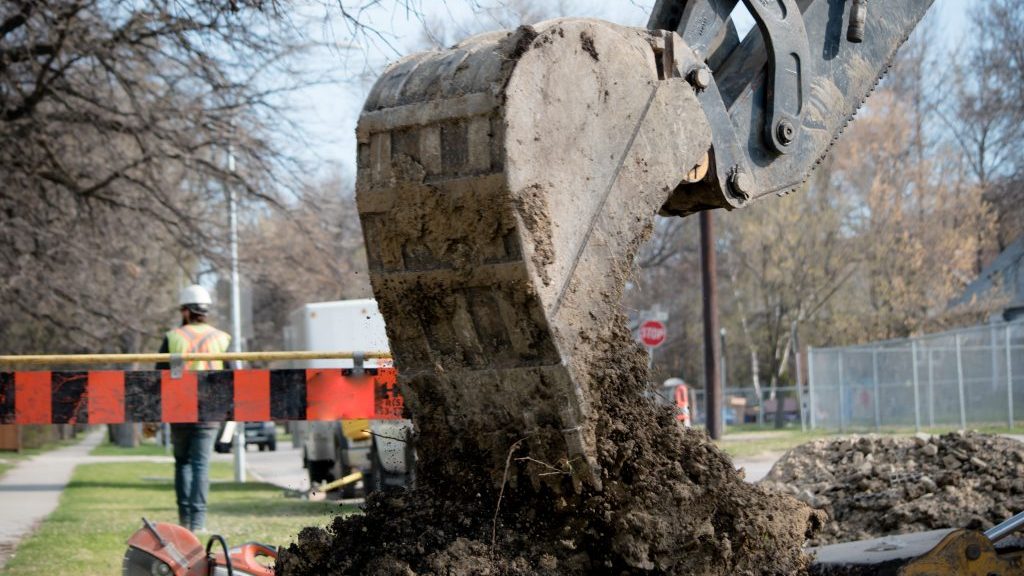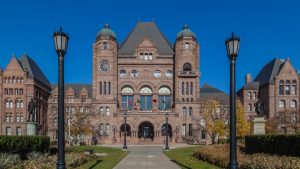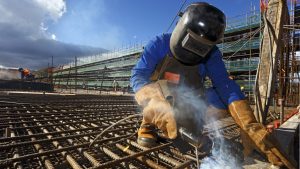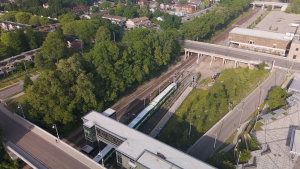The Ontario Government is moving ahead with changes to its excess soils and brownfields regulations to make it easier for construction to reuse excess soil and stakeholders applaud the move.
The announcement was made by Minister of the Environment, Conservation and Parks Jeff Yurek at the Excess Soil Symposium in Ajax, Ont. Dec. 4.
The regulatory changes will provide greater assurance that soil of the right quality is being reused locally, reduce greenhouse gas impacts from truck transportation, prevent reusable soil from ending up in landfills, and strengthen illegal dumping provisions indicates a ministry release. The changes will also clarify when excess soil will be designated as waste and when it will not.
“These changes will remove barriers for communities, developers and property owners to clean up and redevelop vacant, contaminated lands and put them back into productive use,” said Yurek, in a statement.
“Overall, we have clarified rules related to the reuse of excess soil,” said Gary Wheeler, a ministry spokesperson, in an email to The Daily Commercial News.
“This clarification will enable greater local reuse which in-turn will reduce construction costs associated with managing and transporting excess soil and will lower greenhouse gas emissions from the sector.”
Andy Manahan, executive director of the Residential and Civil Construction Alliance of Ontario, who has been working on the file with the ministry for years, said while it is a great achievement, there is more work to be done.
“There are a lot of outstanding issues still to be resolved to make sure the process works as best and effectively as it can,” explained Manahan.
“To properly implement this we still need a governance structure like they have in the U.K.… We need to have those discussions with the ministry as to what body is going to be responsible for moving the agenda forward.”
Although the economic benefits are important, the environmental benefits are more important, said Manahan. Currently, about 25 million cubic metres of excess soil is generated every year. The changes are expected to reduce the almost two million tonnes of soil being sent to landfill annually.
Where it was always deemed a waste product, now it’s deemed as reusable,
— Giovanni Cautillo
Ontario Sewer and Watermain Construction Association
“When our members are bidding on municipal work, they will bid it on the cost of moving soils so if there are beneficial reuses then their bid costs should come down but we need the upfront planning, we need to work municipalities to make sure that works well,” said Manahan.
Giovanni Cautillo, executive director of the Ontario Sewer and Watermain Construction Association said it’s good for the industry because it sees excess soils in a positive, not negative, light.
“Where it was always deemed a waste product, now it’s deemed as reusable,” said Cautillo. “The vernacular needed to be changed. As soon as you talk about excess, you talk about waste, you talk about something that should be thrown away and at no point in time should soil be looked at in that fashion. Soil should have always been looked at as a resource.”
According to the ministry, greater local reuse of excess soils can save between five to 10 per cent of overall project costs.
“Projects that are generating large amounts of excess soil or that are at greater risk of generating excess soil with contaminants may be subject to requirements under these regulations such as assessing and if required characterizing the excess soil being relocated to ensure appropriate reuse, to implement a tracking system and to register excess soil movements,” Wheeler stated.
The Ontario Home Builders’ Association said they are supportive of the changes.
“This will create business certainty, while ensuring the tracking and quality of soil being deposited and increasing opportunities for reuse on other sites,” said Joe Vaccaro, CEO, Ontario Home Builders’ Association, in a statement. “Furthermore, exempting historic road salting that was preventing developers from obtaining an RSC (Record of Site Condition) is a very positive amendment supporting new housing supply.”
The provincial government is also reducing barriers for developers to clean up and redevelop brownfield properties so underused land in prime locations can be put back to productive use.
“These new excess soil standards recognize a new regulation for excess soil but they also recognize they had to harmonize that new regulation with existing regulations, one of which was the brownfield regulation,” explained Al Durand, manager, SOiiL (Supporting Ontario Infrastructure Investments and Lands), who was also involved in consulting on the regulations.
“In doing so they identified a couple of changes and one of them was relaxing the requirement to do all the testing for groundwater… By changing the regulations on groundwater they’ve accelerated the redevelopment process and getting a Record of Site Condition which is, in most cases, a requirement now to get a building permit in Toronto and other jurisdictions too.”
The regulatory changes are expected to be phased in starting in July 2020 and will continue until 2025.
“Sufficient time has been provided for businesses affected by these regulations to understand and incorporate these rules into business practices,” said Wheeler. “Grandfathering provisions are also provided in relation to contracts in effect prior to certain dates.”










Recent Comments
comments for this post are closed